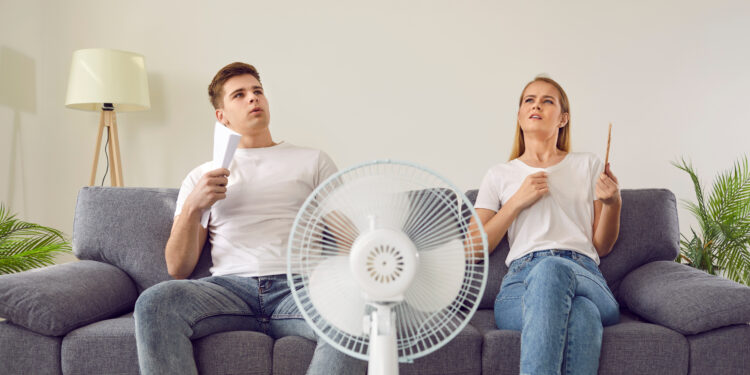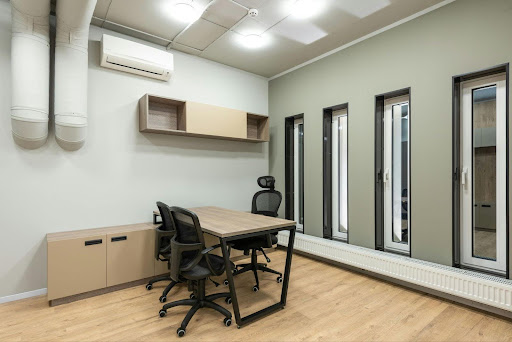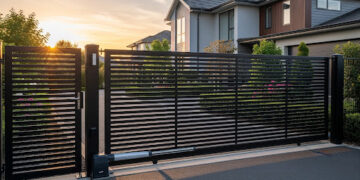Summer heat can push your home’s energy use into overdrive. The air conditioner runs nonstop, ceiling fans spin all day, and before you know it, the electric bill starts climbing. Staying cool is important, but that doesn’t mean you have to accept sky-high energy costs. So, how do you keep your space comfortable without letting the heat drain your budget?
The good news is that a few small changes can go a long way. Here are effective ways you can reduce energy consumption during the hot months without sacrificing comfort.
Adjust Thermostat Settings Strategically
You can cut down on your cooling costs just by adjusting your thermostat a bit. Try raising it by 7° to 10°F from your usual setting for at least 8 hours a day, especially when you’re not home. That simple change can save you up to 10% a year on heating and cooling. The smaller the gap between indoor and outdoor temperatures, the less your AC has to work, which means lower energy bills and less energy wasted.
Using a programmable thermostat makes this even easier by automatically adjusting temperatures based on your routine. It also helps to understand your AC unit wattage, especially if you’re aiming for long-term efficiency. Knowing how much power your unit draws can guide you in making smart adjustments without sacrificing comfort.
Block Out Excess Heat During the Day
Reducing the amount of heat entering your home is one of the easiest ways to cut back on cooling costs. Close your blinds or curtains during the day, especially on windows that get direct sunlight. Blackout curtains or thermal shades offer extra insulation as they can help keep rooms cooler without relying solely on air conditioning.
Window films and solar screens are also effective at minimizing heat gain. These inexpensive upgrades can reflect or absorb sunlight before it heats your home’s interior, lightening the load on your cooling system.
Use Fans to Your Advantage
Fans don’t cool the air, but they make you feel cooler by moving it around. A ceiling fan set to spin counterclockwise will push air downward and create a breeze that helps you stay comfortable without lowering the smart thermostat.
If you’re using a box or window fan, place it on the cooler side of the house to pull in outside air. Once the sun sets and outdoor temps drop, open a few windows and use fans to flush out the warm air.
Just remember: fans cool people, not rooms. Turn them off when no one’s in the room to avoid wasting electricity.
Limit Heat-Generating Activities During Peak Hours
Running ovens, dryers, water heaters, and dishwashers during the hottest part of the day adds unnecessary heat inside your home. That forces your AC to work harder than it needs to. Shift those tasks to the early morning or after sunset to ease the strain on your cooling system.
If you can, skip the oven entirely and opt for no-cook meals or outdoor grilling. Use the microwave or slow cooker when you need to heat food, as they put out less heat than a full-sized oven.
Seal Gaps and Insulate Properly
Cooling your home is only half the job. Keeping that cool air inside matters just as much. Cracks around doors, windows, or vents let conditioned air slip out while letting the summer heat creep in. Sealing those gaps with weatherstripping or caulk is a quick, affordable fix that can make your space more efficient right away.
Once you’ve handled the obvious leaks, take a closer look at your insulation. Poorly insulated walls or attics allow heat to seep in and linger, making it harder to keep rooms at a comfortable temperature. If you’re unsure where to start, focus on the attic first because it’s one of the most common sources of heat buildup in the house.
Switch to Energy-Efficient Lighting
Traditional incandescent bulbs give off more heat than you’d think, especially when several are on at once. Switching to LED or CFL bulbs can cut both your energy use and the amount of heat circulating indoors.
Turning off lights in empty rooms helps even more. During the cooler parts of the day, take advantage of natural light to brighten your space without adding warmth. These small adjustments can ease the burden on your cooling system.
 Unplug Devices When Not in Use
Unplug Devices When Not in Use
Some energy drains are easy to overlook, like electronics that stay plugged in 24/7. Devices such as chargers, microwaves, and game consoles draw small amounts of electricity even when they’re not in use. It might not seem like much, but across multiple devices, it adds up.
To avoid this “phantom load,” unplug what you’re not using, or use a power strip with an off switch for convenience. If you’re leaving home for more than a day, powering everything down can save energy and reduce unnecessary heat indoors.
Upgrade to Energy-Efficient Appliances
Older appliances tend to pull more electricity than newer, energy-efficient models, especially under pressure during the summer months. If your refrigerator, AC unit, or washer is showing its age, replacing it might lead to noticeable savings on your electric bill.
Modern appliances and smart home technology are designed to perform better while using less power. Though the upfront cost can feel steep, the long-term benefits often make it worth it, especially if your current setup is due for an upgrade anyway.
Key Takeaway
Looking at these tips, you’ll realize that you don’t need to make any major changes to your home just to lower your energy consumption. All it takes is to be a little more intentional with your energy usage and habits. And eventually, the real difference shows up when those everyday choices start working together.












